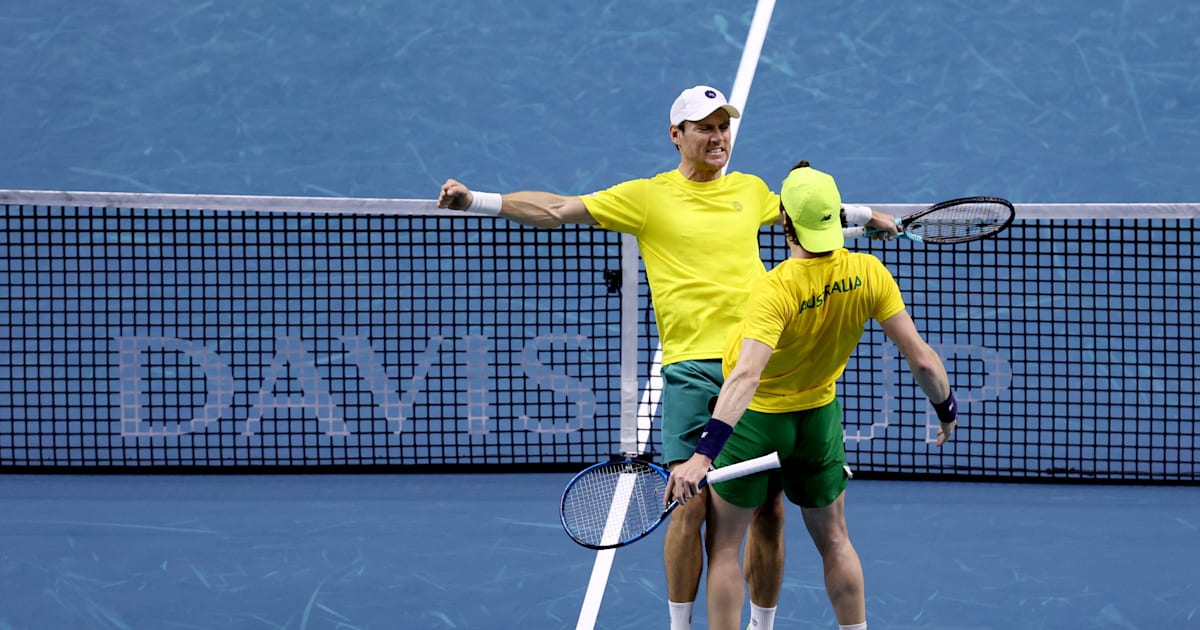Pat Rafter is one of eight prominent Australians set to feature in the new season of Who Do You Think You Are? The episode on the tennis legend .
The talent was always there, but the complete package didn’t manifest for quite some time – in fact, it was almost too late.
After turning professional in the twilight of his teenage years, Rafter’s first taste of the ATP Tour was a difficult one in the spring of 1991.
What began with a straight-sets defeat welcomed three more in 1992, before the young man from Queensland’s Mount Isa finally found success in 1993.
A straight-sets victory over compatriot Simon Youl sparked a surprising run to the Round of 32 at Wimbledon, where Rafter eventually bowed out to defending champion Andre Agassi.
Upon reflection, that defeat was a victory of sorts for Rafter, who had been considering his future in the sport.
“I gave myself a year. I’d been on the road for two and a half years trying to make it,” Rafter told SBS Sport.
“Generally by then you have a pretty good feel of whether or not you’re going to do it or make an impact.
“I wasn’t a big, strong young man yet and I was playing a big, strong game, and I really wasn’t physically ready to play it.”
A combination of coaching, development and sheer determination saw the Australian make significant strides in 1994, culminating in his first singles title at the Manchester Open.
For Rafter, there wasn’t so much a moment of realisation to continue his career, but rather a process whereby the physical and mental components slowly came together.
By 1997, his career reached heights not even he thought possible – having vanquished the likes of Agassi, Michael Chang, and Greg Rusedski to become the first non-American to win the US Open since Stefan Edberg in 1992.
In his own words, it was a dream – and yet, it was only the beginning.
“It was never supposed to be quite as successful as it turned out,” Rafter said of his playing career.
“I certainly didn’t expect that.
“If you talk to any of my mates and any of my colleagues that I played tennis with, they probably would have been one of the last ones to think that I would have made it.”
American tennis icon John McEnroe was among Rafter’s detractors at the time, famously labelling the Australian a ‘one-Slam wonder’ in the aftermath of his 1997 victory.
Another was Pete Sampras, a 14-time Slam-winner who was quick to remind reporters of the difference between he and Rafter’s trophy cabinets before the 1998 US Open.
Through it all, however, Rafter remained unperturbed – ever so measured in his approach, unfazed by his critics, and along for the ride his own exploits would take him.
I felt like I was never going to win a Grand Slam.
Pat Rafter told SBS Sport
“You hope you’re going to win one and you talk about it, laugh about it, but you’re never really sure if you’re ever going to.
“You don’t get many opportunities at my level, you know, we’re not [Roger] Federer, [Rafael] Nadal, [Novak] Djokovic, Sampras, where you’re giving yourself multiple opportunities.
“I thought he [McEnroe] was right … you just wonder, how many am I going to get?”
Propelled by his athleticism, agility, and effective serve-and-volley, Rafter went on to win another singles Grand Slam in 1998 – claiming the US Open with a four-set victory over compatriot Mark Philippoussis.
A five-set classic with Sampras in the semi-final made the title defence even sweeter for the then 25-year-old, though the American would later get his revenge in the 2000 Wimbledon final.
That was the first of two consecutive defeats at the final hurdle of the English Grand Slam, the other coming against wild card Goran Ivanisevic in dramatic fashion.
The nature of both defeats ‘hurt a lot’, in truth, and left the former world number one vowing to never encounter such a situation – in a battle to control one’s emotions – again.
To his credit, Rafter never did and soon stepped away from the court altogether – content with his incredible accomplishments but unaware his greatest was still to come: being named 2002 Australian of the Year.
“It was amazing, actually. Probably the highest (honour) you can get, recognition from your country,” said Rafter, who displayed fair play, respect, and charitable generosity throughout his playing career.
“To be awarded that is saying that you represent your country around the world in a way they deem fit and very Australian.
“I get introduced as that – Australian of the Year – in a lot of things that I do and that’s probably the one that makes me feel very, very proud.”
These days, the 51-year-old prefers quiet time spent with his family in Byron Bay, New South Wales, enjoying the fruits of his labour while keeping an eye on Australia’s current crop of tennis players.
Between frequent interactions with Christopher O’Connell and Max Purcell, Rafter watches world number 11 Alex de Minaur with keen interest – hopeful he can be the one to finally break the nation’s 22-year wait for a men’s Grand Slam champion.
“Alex de Minaur is doing everything he can,” Rafter added.
“He’s trying his hardest, he’s working on his game so much. Mentally, he’s one of the toughest guys on the tour.
“To me, he’s the one standout that we have … out of anyone in Australia, he’s the one that I would hope could win one, and he deserves to win one.”







